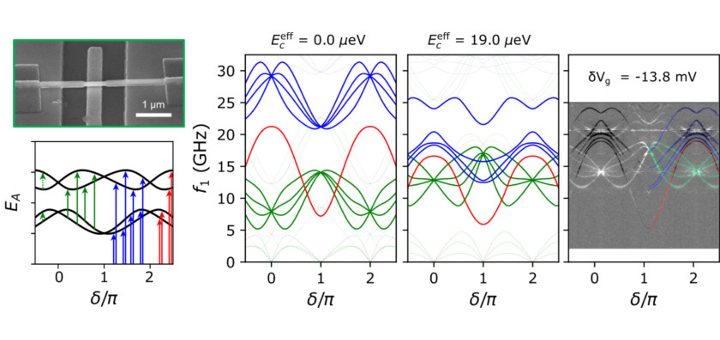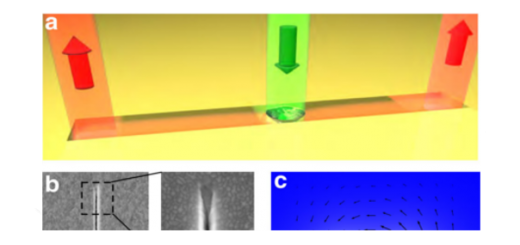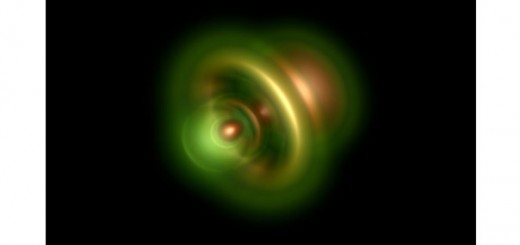Signatures of Interactions in the Andreev Spectrum of Nanowire Josephson Junctions
Article published in Physical Review Letters by F. J. Matute-Cañadas, Sunghun Park and Alfredo Levy Yeyati, members of the Theoretical Condensed Matter Physics Department and IFIMAC researchers.
This joint experimental and theoretical work provides evidence of Coulomb interactions in Josephson weak links, revealed by the splitting of certain degeneracies in the transition lines between different many-body configurations of Andreev levels, which are discrete, subgap, fermionic states localized in the junction that carry supercurrent.
When the length of the weak link is comparable with the superconducting coherence length, several Andreev levels appear inside the gap. In addition, in the presence of spin-orbit coupling, they spin split for nearly all values of the phase difference between each superconducting lead, an experimental knob that is controlled by a magnetic flux through the loop where the junction is embedded. This is the situation that has been explored in this work by the Quantronique laboratory in Saclay using hybrid InAs nanowire junctions grown in Copenhagen. The measurement technique consists in applying microwaves at a variable frequency and then probing a resonator coupled to the junction.
Two kinds of transitions are expected: single quasiparticle transitions in which one trapped quasiparticle is excited from one Andreev level to a higher one, and pair transitions in which two quasiparticles are created in two different Andreev levels. In the latter case, when each quasiparticle goes to a different pair of Andreev states, the four possible associated configurations fully split in all phase differences due to interaction. This splitting is reminiscent of a singlet-triplet arrangement, where the triplet is additionally split by the strong spin-orbit coupling, resulting in a rich structure that is qualitatively reproduced with the model calculations.
These findings improve our understanding of quasiparticle excitations in hybrid devices, which are promising candidates for applications in quantum computing, and thus are relevant for the development of either Andreev or Majorana based qubits in these systems. [Full article]




















